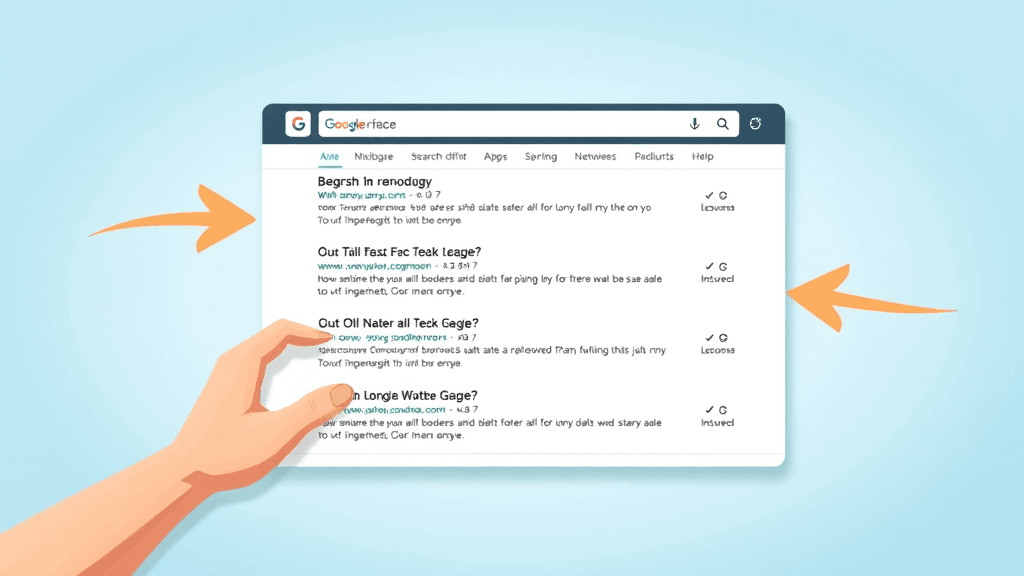Did you know? In 2023, searches for “Botox near me” jumped by over 40% nationwide, revealing a sharp rise in patient demand—and fierce competition among practices. Understanding what patients are actually typing into search engines is the key difference between a thriving med spa and one lost in the digital crowd. In this guide, we’ll show you how to use botox keyword research to attract more bookings, outsmart your competitors, and grow your aesthetic practice.
- The importance of botox keyword research for med spa and aesthetic practice growth
- How to leverage search engine data for more effective SEO strategy
- Discover actionable tips for digital marketing and content marketing focused on your target audience
- Tools and techniques for identifying high-value search queries related to botox and filler services
- Guidance on local SEO, Google Ads, and social media integration
“Patients aren’t just searching for ‘Botox’—they’re looking for personalized solutions. Understanding the nuances in keyword research can transform your aesthetic practice’s digital success.”

Startling Insights: Why Botox Keyword Research Matters for Your Aesthetic Practice
As more people seek out Botox and filler treatments, it’s no surprise that online competition for these services is intense. If your med spa relies on walk-in traffic or simple word-of-mouth, you might be missing the huge population researching providers via Google. Every day, thousands of potential clients use search engines to find solutions for wrinkles, volume loss, or the best local botox clinic—and they don’t always use obvious words like “Botox.” Instead, they search for specific key concerns, side effects, recovery tips, or even questions like “Is Botox safe?”
That’s why botox keyword research is a powerful first step in any winning SEO strategy. By identifying the actual words, questions, and phrases your target audience uses, you can fine-tune your website, blog posts, Google Ads, and social media to build trust and earn higher spots in search results. Med spas that go beyond surface-level terms and leverage detailed, user-driven data see dramatically better conversion rates and more loyal patients over time.
Furthermore, great keyword research doesn’t just attract more visitors; it attracts the right visitors—people genuinely searching for solutions your med spa provides. This ensures that your content marketing and digital marketing efforts resonate with individuals ready to take action. With effective keyword research, your med spa can focus on treatments patients truly care about, anticipate their most common questions, and offer resources that set you apart as a trusted authority. Ultimately, this strategic advantage can lead to more bookings, better patient retention, and a reputation as the go-to aesthetic practice in your market.

Understanding Botox Keyword Research: The Foundation of Effective Search Engine and SEO Strategy
Defining Keyword Research in the Context of Botox and Filler Services
Keyword research is simply the process of uncovering the words and questions people type into Google (and other search engines) when seeking botox and fillers. For aesthetic practices, this means going beyond generic terms like “botox” to understand what potential patients truly want—like “best botox clinic near me,” “side effects of lip filler,” or “how long does botox last?”
For example, if your target audience often searches for “affordable Botox for forehead wrinkles” or “dermal fillers for under-eye bags,” these become valuable clues that can shape your website pages, blog post topics, and ad campaigns. Effective keyword research ensures your content and digital marketing strategy speak the same language as your most motivated, high-converting audience. It’s also the secret to ranking higher in search results, as search engines reward websites that closely match what users seek.
In the world of botox and filler services, understanding the subtleties of search intent sets apart top clinics. It helps you create pages that answer pre-treatment questions, address concerns about side effects, and highlight your expertise in both botox and dermal filler solutions. Thoughtful keyword research forms the core of every successful SEO strategy for med spas, leading to better discoverability and a stronger online brand presence.
Why Botox Keyword Research is Essential for Every Aesthetic Practice
Imagine spending months and money developing a beautiful website for your med spa, only to have it buried beneath your local competitors in search results. This is what happens when practices skip or underestimate the power of keyword research for Botox and fillers. Without a clear roadmap of which terms your audience cares about most, your pages and blog posts risk getting lost.
Strategic keyword research offers a direct path to improved online visibility, ensuring your aesthetic practice reaches patients who are ready to book—whether they’re searching for “botox near me,” asking about costs, or looking up the side effects of dermal fillers. Additionally, targeted research can reveal seasonal spikes in interest (e.g., more people seeking treatments before holidays) and identify new service opportunities for your clinic.
In summary, integrating powerful botox keyword strategies into your digital presence will not only help you attract more leads but also convert them into loyal clients. With proper research, your med spa stands out as a trusted source, consistently ranking higher and drawing in people eager to enhance their appearance with safe, modern cosmetic solutions.
| Search Term | Avg. Monthly Searches | User Intent |
|---|---|---|
| botox near me | 27,000 | Transactional |
| botox cost | 12,500 | Informational |
| lip fillers | 14,200 | Transactional/Informational |
| best botox clinic | 7,800 | Navigational/Transactional |
| dermal fillers side effects | 5,400 | Informational |
| botox aftercare | 6,100 | Informational |
How Patients Search: Uncovering User Intent in Botox and Filler Keyword Research
Analyzing Search Engine Data to Identify Patient Queries
Patient behavior online has shifted dramatically as more individuals go digital for research before a cosmetic procedure. By analyzing search engine data, med spas can find out not just what people are searching for, but how—and “why.” For example, one person might ask, “How long does botox last?” while another searches for “Botox aftercare tips.” By identifying phrases that get the highest monthly searches in your target market, you can anticipate which services will drive more bookings and tailor your site accordingly.
Tools like Google Keyword Planner, SEMrush, and Ahrefs can track which words get searched most, how much competition exists, and even what local patients want to know. With this information, you can plan new landing pages, FAQs, and blog posts that directly address the concerns most important to your potential clients. This targeted content not only meets patient expectations but also positions your med spa as an authority willing to answer every question.
Furthermore, studying search data over time highlights changes in demand—such as increased interest in particular filler types or safety concerns. You can also use these insights to plan ahead for seasonal peaks, like an uptick in “botox for weddings” or “holiday beauty treatments.” Ultimately, looking at real search data means you deliver exactly what your audience wants, building trust and increasing your practice’s reputation for expertise and care.
Understanding the Difference Between Transactional, Informational, and Navigational Keywords
Not all botox and filler keywords serve the same purpose. For effective SEO and digital marketing, it’s crucial to know the user intent behind each search:
- Transactional Keywords: These signal a person is ready to act (e.g., book a treatment or call a clinic). Examples: “book botox appointment,” “buy lip filler near me.”
- Informational Keywords: These indicate the user wants to learn more (e.g., about procedures or aftercare). Examples: “botox recovery time,” “side effects of dermal fillers.”
- Navigational Keywords: Used when users are looking for a specific brand, clinic or physician. Examples: “Dr. Smith Aesthetics,” “XYZ med spa hours.”
blog posts
Balancing your content around all three intents boosts visibility, conversion rate, and trust. Your practice doesn’t just show up when people are ready to book, but also when they’re learning about safety, differences between injectables, and what makes your botox clinic or med spa unique.

Choosing the Right Botox Keywords: Step-by-Step Keyword Research for Your Med Spa or Aesthetic Practice
Brainstorming Seed Keywords for Botox and Filler Services
Getting started with botox keyword research means identifying the “seed” terms most aligned with your target procedures and audience. Common seeds include “Botox,” “lip fillers,” “dermal fillers,” “wrinkle treatment,” and “best botox clinic.” Involve your whole team in this creative exercise—a strategy session with your front desk staff, medical providers, and marketing professionals might uncover phrases actual patients use daily that you’d never consider otherwise.
List out both broad terms (“botox near me,” “filler injections”) and niche, specific key phrases relevant to your unique approach, such as “natural-looking botox,” “preventative Botox for millenials,” or “gentle lip augmentation.” Jotting down every question you get on the phone, via DMs, or in your med spa can help jumpstart your organic keyword strategy for both general site pages and specialized blog posts.
Encourage brainstorming that also addresses local concerns, common side effects, and common misconceptions, since these highly targeted ideas result in less competitive and more relevant keywords. These opportunities can drive massive business growth, especially among patients who feel that your content “gets” their exact questions or aesthetic goals.

Utilizing SEO Tools for In-Depth Botox Keyword Research
After you generate your list of seed keywords, you’ll want to harness modern SEO tools to expand your keyword universe and analyze performance potential. Tools like Google Keyword Planner, Ahrefs, SEMrush, and Moz help you discover what your target patients actually type into the search engine, showing each word’s monthly search volume, relevance, and the level of competition for ranking.
These platforms also provide useful features such as “related keywords,” “search trends over time,” and reveal the actual questions patients ask—which is gold for content marketing and FAQ pages. Make sure you’re mixing well-known terms like “botox for forehead lines” with long-tail queries like “how to fix uneven eyebrows after botox,” as these have lower competition and higher intent to book your services.
In-depth research also uncovers less obvious but valuable phrases, such as those targeting specific demographics (e.g., “botox for men”), new products or techniques (“lip filler Russian technique”), or trending concerns (“side effects of hyaluronic acid fillers”). With this knowledge, you can strategically optimize your entire digital presence, improving both search engine visibility and trust with potential patients.
Evaluating Competition and Search Intent for Specific Keywords
Knowing which keywords are popular is just the start—successful med spas also evaluate how competitive each term is and what patient intent lies behind the search. If dozens of local clinics already dominate “Botox near me,” try winning easier battles with niche, specific key phrases like “best Botox in [your neighborhood]” or “filler aftercare tips for sensitive skin.”
Tools like Ahrefs and SEMrush let you spy on competitors’ most valuable keywords and top-ranking pages. Look closely at both direct competitors (other med spas in your area) and “content competitors” (major beauty blogs or review sites) to find gaps you can fill. By honing in on phrases with a good mix of volume, lower competition, and strong patient intent, you can climb the search rankings more quickly—and attract higher-quality leads.
Finally, regularly update your keyword strategy as new treatments launch, patient concerns evolve, and Google algorithms shift. This flexibility is a must for long-term SEO success across all content—homepage, service pages, blog posts, and ad campaigns.
- Checklist: Criteria for Selecting High-Impact Botox Keywords
- Relevant to your core services (botox, lip fillers, dermal fillers, aftercare, specific treatments, etc.)
- Reflects user intent—transactional, informational, or navigational
- Achievable competition level
- Trackable monthly search volume
- Matches your target audience‘s language and concerns
- Seasonal or trending search potential
- Gaps in content not already filled by competitors
Leveraging Botox Keyword Research in Your SEO Strategy
On-Page SEO: Integrating Botox Keywords into Website Content and Blog Posts
The quickest way to see results from your botox keyword research is to weave those terms naturally into your web pages and blog posts. Focus on placing target keywords in page titles, headings (H1, H2), meta descriptions, and throughout the body content. Use specific keywords in image alt text, internal links, and even video transcripts to boost your SEO.
For example, your “Botox Aftercare” page might include related questions as subheadings: “How to sleep after botox?” or “What not to do after injections?” These topical additions improve your odds of appearing in Google’s “People Also Ask” and answer boxes, attracting more potential clients searching for real solutions. Remember, focus on readability—write naturally, and don’t overstuff pages with keywords.
Regular content updates and blog posts targeting trending or seasonal botox and filler topics demonstrate your clinic’s expertise. This approach signals to search engines—and prospective patients—that you’re a leader in the aesthetic field, consistently providing value.
Content Marketing Strategy: How to Use Botox and Filler Keywords to Build Trust and Authority
A robust content marketing plan built around your botox keyword findings can set your med spa apart from the crowd. Create helpful guides, testimonials, video walkthroughs, and explainer articles on common procedures, recovery times, and patient concerns. Consistently targeting popular and relevant keywords in your content helps you rank higher for more queries and build trust with readers.
Your blog posts could include deep dives into “What to expect from your first botox appointment,” comparisons of botox versus dermal fillers, or posts debunking common myths about injectables. Each piece should directly answer the questions and concerns your target audience reveals through their search queries. Over time, you’ll become a go-to source for both new and returning patients, driving business not just through SEO, but also word-of-mouth referrals and social shares.
To maximize results, consider using keyword-rich multimedia—like infographics, demonstration videos, or downloadable aftercare checklists. These content assets boost dwell time, engagement, and social proof, reinforcing your practice’s credibility as a top botox clinic or med spa.

Local SEO: Ranking Your Med Spa for Botox Keyword Research in Your Area
Local SEO is a game-changer for med spa owners targeting patients in their neighborhood or city. By including location-specific keywords—such as “botox in [city],” “dermal fillers [suburb],” and “top rated med spa near me”—you target people ready to book nearby services. This requires not just keyword-rich service pages, but also optimized Google My Business profiles, local directories, and reputation management through patient reviews.
Add your address, service areas, and primary treatments in every relevant part of your website, and encourage satisfied clients to review your business online. Regularly post updates, FAQs, and promotional offers targeting local patients. These actions signal to search engines that you’re a trusted local provider, boosting your rankings for valuable, high-converting searches.
Consistent application of local botox and filler keywords across your website content, blog posts, and social media updates keeps search engines—and your community—aware that you’re the best choice in the area.
Advanced Botox Keyword Research Techniques for Aesthetic Practice Growth
Long-Tail Botox and Filler Keyword Opportunities
Long-tail keywords, while less searched for individually, account for a massive portion of actual bookings and inquiries. These are highly specific queries like “can I get botox while breastfeeding?” or “botox and dermal fillers for smile lines.” While these terms may only see a few hundred searches a month each, users typing them are motivated, informed, and ready to book.
By creating detailed landing pages, blog posts, and video content focused on these long-tail topics, you dramatically increase both your visibility and your conversion rate. Moreover, because these phrases are less competitive, even new or smaller clinics can quickly rank near the top of search engine results, reaching audiences big brands may overlook.
Don’t forget to check Google’s autocomplete and “People Also Ask” sections for inspiration. These sources reveal exactly how patients phrase their unique needs and set the stage for you to answer them better than anyone else.

Seasonal Trends in Botox Keyword Research
Demand for botox and filler services isn’t static—it surges and dips throughout the year. For instance, searches spike ahead of wedding season, holidays, and return-to-school periods as patients look to refresh their appearance. By tracking these seasonal trends, your med spa can release targeted offers, blog posts, and ads right when interest is highest.
Tools like Google Trends or SEMrush’s Keyword Magic tool make it simple to visualize when your top keywords see the most action. Planning months ahead allows you to “own” search results for waves of new patients, rather than playing catch-up. Adjust your site’s homepage banners, service highlights, or event pages to catch these timely search surges and maximize bookings.
By preemptively answering timely questions (“best botox for summer events,” “pre-wedding filler tips”), you capture both spontaneous and planned appointment shoppers, multiplying your med spa’s growth opportunities.

Analyzing Competitors: How Leading Botox Clinics Optimize for Search Engine Success
The top botox clinics don’t just rely on guesswork—they use competitor analysis to discover which keywords and content bring in the most patients. Reverse-engineering what’s working for your major competitors (both locally and nationally) reveals both winning strategies and gaps you can exploit.
Tools like SEMrush and Ahrefs reveal which pages draw the most organic traffic, which keywords a botox clinic ranks for, and even what backlinks drive their authority. Study high-performing competitors’ meta titles, H2 headings, and FAQ topics, and create even more comprehensive, up-to-date versions for your own practice. This keeps your seo strategy agile and your content the most relevant in the market.
Ethical competitor research is about learning, not copying—find your voice, highlight your unique patient experience, showcase case studies, and reflect the questions your actual clients ask to increase your online visibility and build lasting trust.
Video Content SEO: Using Botox Keyword Research to Amplify Visual Content
Video content is now a must-have in any modern med spa’s marketing toolkit, especially as search engines prioritize multimedia in rankings. Leverage your most valuable botox and filler keywords in your video titles, descriptions, and tags—whether it’s live Q&A, procedure walkthroughs, or patient testimonials.
Embedding keyword-optimized videos on your service pages and in blog posts not only boosts search rankings, but also improves patient engagement and dwell time—two critical SEO signals. Moreover, platforms like YouTube are search engines in their own right; optimizing for “how long does botox last?” or “botox aftercare tips” can pull in organic traffic beyond your website.
Don’t forget to transcribe important clips and include summaries using high-value phrases. This makes your videos accessible and discoverable, drawing in both visual and reading-first audiences.
Integrating Botox Keyword Research Within Your Overall Digital Marketing Plan
Google Ads and Paid Search: Maximizing Visibility with Highly-Targeted Keywords
While organic SEO builds steady momentum, well-executed Google Ads let you instantly capture high-intent patients searching for key treatments. Use your research to star only the most transactional and high-conversion phrases for your paid ads—for example, “book botox consultation now” or “best med spa for dermal fillers.” Regularly update your ad copy to match emerging trends, new services, or local events, and monitor conversion rates to fine-tune your investment.
A smart paid strategy complements your organic SEO, bringing in eager patients during peak demand windows and ensuring your med spa always lands atop relevant search results.
Remember to A/B test different ad headlines and extensions, using language lifted directly from your most searched queries and top-performing organic pages for maximum relevance and click-through rates.
Social Media Strategy: Aligning Organic Content with Trending Botox Keywords
Social media is a goldmine for both real-time trends and patient engagement. Align your organic and paid content on platforms like Instagram, Facebook, and TikTok with the botox and filler keywords surfacing in your research. Use related hashtags, local geotags, and CTAs that echo trending concerns (“ask us about lip filler aftercare!” or “holiday botox specials near me”).
Feature posts and stories answering common patient questions, highlight staff expertise with keyword-rich captions, and run interactive elements like polls and Q&As to drive both engagement and SEO relevance. This cross-channel approach boosts both your search engine rankings and your social credibility.
Consistent keyword integration across all digital channels ensures your med spa gets discovered by new patients whether they’re browsing Google, searching Instagram hashtags, or scrolling their Facebook feed.
Common Challenges in Botox Keyword Research and How to Overcome Them
Avoiding Keyword Cannibalization in Botox and Filler SEO
One major mistake med spas make is “keyword cannibalization”—creating multiple pages competing for the same keyword, which confuses search engines and can lower rankings. Instead, assign one main page for each core term (“Botox Aftercare” or “Lip Fillers”) and use supporting posts to dive deep into related subtopics. Build a solid internal linking structure so Google understands which page is authoritative and what supporting articles help patients go deeper.
This approach ensures your site wins for the best possible range of queries without sacrificing clarity or authority.
Conduct regular site audits every few months to identify overlapping content, and redirect or consolidate duplicate pages to consolidate ranking power. This makes your SEO both more powerful and easier to manage in the long run.
Staying Ahead of Google Algorithm Updates Impacting Medical SEO
In the world of medical SEO, Google regularly changes how it values authority, trust, and relevance—especially for health-related topics. To stay ahead, focus on producing high-quality, well-researched, and patient-friendly content that directly addresses the latest concerns or regulations.
Participate in authoritative industry conversations on social media, encourage genuine patient reviews for local SEO, and maintain your Google My Business listing with accurate, up-to-date information. Flexible, continuous keyword research ensures you adapt rapidly to shifting rules and algorithm updates, protecting your med spa’s hard-earned rankings.
Subscribe to trusted SEO newsletters and periodically check your search rankings and website analytics to spot sudden drops or changes. When you notice updates, quickly realign your content to Google’s newest recommendations to remain the go-to aesthetic practice online.
Case Studies: Successful Botox Keyword Research Implementation by Leading Aesthetic Practices
How One Med Spa Increased Bookings Through Strategic Botox Keyword Research
Dr. Lee’s local med spa struggled for years with inconsistent patient inquiries, despite stellar results and service. By conducting targeted botox keyword research, her team discovered a local surge in searches for “preventative botox in millennials” and “natural lip augmentation techniques.” They created new landing pages and blog posts addressing exactly these topics, including before-and-after photo galleries and detailed FAQs.
Within six months, website traffic grew 70%, and bookings from new patients tripled. Key to their success: focusing every page on one unique search intent, actively listening to patient questions, and using data, not guesswork, to guide content decisions.
Lessons Learned: What Sets Top Botox Clinic SEO Apart
Industry-leading results stem from a few simple strategies: listening to actual patient search habits, updating keyword research every quarter, and creating more helpful and complete answers than the competition. Top botox clinic sites have clear service menus, transparent pricing, prominent “Book Now” buttons, and in-depth FAQs based on real patient searches.
These practices also invest in original photography, regular blog posts, and personalized patient success stories to reinforce both their expertise and approachability.
Video #1: Walkthrough of a Real Botox Keyword Research Process
People Also Ask: The Most Searched Botox Questions
What is the 4-hour rule for Botox?
The “4-hour rule” in botox treatment means that after your injection, you shouldn’t lie down, bend over, or exercise for at least four hours. This helps ensure the botox stays where it’s meant to and doesn’t migrate to other facial muscles. Following this guideline helps prevent unwanted side effects such as uneven results or temporary eyelid drooping—which are concerns many patients search for before and after their appointment.
Explanation of the 4-hour Rule and Its Importance for Patients and Clinics
The four-hour rule is recommended by top medical professionals and botox clinics because movement or pressure right after injection can disrupt the placement and effectiveness of the treatment. Answering this search on your website or in a dedicated aftercare blog post reassures potential clients, builds trust, and demonstrates your med spa’s expertise. Including this answer with your own professional insights on your site can help capture queries from new patients seeking safety and guidance.
What is the scientific word for Botox?
The scientific term for Botox is “botulinum toxin type A.” Most patients won’t know this and might search using different words like “scientific name for Botox” or “botulinum A.” Including both everyday and technical terms on your pages and blog posts ensures everyone—from curious newcomers to informed patients—can find and trust your content.
Scientific Terminology Explained and How Patients Search for This Information
Patients often look up the scientific context behind Botox for peace of mind or to compare brands (like Dysport or Xeomin). Your med spa’s website should clarify that Botox is the brand name for a specific formulation of purified botulinum toxin type A, explaining its safety record, uses, and differences from other injectables. This helps position your clinic as transparent, up-to-date, and authoritative in medical aesthetics.
How to promote Botox business?
Promoting your Botox business starts with keyword research to find the most profitable and relevant search terms for your area and services. Next, optimize your website, create helpful blog posts, run Google ads targeting high-intent phrases, encourage positive patient reviews, and engage with patients on social media platforms using current trends and trending keywords. Consistent digital marketing, transparent pricing, and visible booking options are proven ways to boost your online presence, draw new inquiries, and outperform nearby competitors.
Proven Digital Marketing and Keyword Research Tactics for Med Spas
High-performing med spas often invest in monthly content strategy sessions, review and update their SEO keyword plans, and split-test different Google Ad headlines. They also respond promptly to social media DMs, post before-and-after photos, and allocate a portion of their budget to targeted paid campaigns for new or popular services. Highlighting staff expertise, patient testimonials, and breakthrough treatment results all further help set your practice apart online.
What is the new study on Botox?
Recent studies on Botox have focused on expanded applications beyond wrinkle reduction, like migraine prevention and treatment of hyperhidrosis (excess sweating). These advances often lead to spikes in searches for new uses and safety questions. Staying up-to-date and reflecting the latest research in your website and blog posts helps you connect with patients searching for innovative solutions or reassurance about newly approved treatments.
Overview of Recent Research and How It Affects Patient Search Trends
Whenever a new clinical trial or FDA approval is announced, there’s a dramatic uptick in related searches—like “Botox for migraines” or “Botox safety for teens.” Quickly addressing these news topics on your site (even in short blog post updates) allows your med spa to rank for fresh, emerging queries while building credibility as a leader in medical aesthetics.
Frequently Asked Questions: Botox Keyword Research for Growth
What is the benefit of ongoing botox keyword research for a med spa?
Continuously updating your keyword research ensures your med spa stays ahead of patient needs and online search trends. This proactive approach helps you attract new inquiries, answer the latest patient questions, and adapt to shifts in search engine algorithms. The result: consistent website growth, higher booking rates, and stronger community recognition as the go-to botox clinic.
How often should you update your botox keyword research strategy?
Experts recommend reviewing your botox keyword research every three to six months, or any time your practice adds new treatments or expands locations. Seasonal changes, new studies, and patient trends can quickly affect which topics matter most. Regular strategy sessions keep your SEO plan accurate and effective.
What are the best tools for botox keyword research?
Leading tools include Google Keyword Planner, SEMrush, Ahrefs, Moz, and Ubersuggest for comprehensive keyword analysis. Google Trends and Answer the Public offer insights on trending questions, while Google Analytics helps you track which pages convert best. Most importantly, combine data from these tools with real patient feedback and everyday search behavior for a complete strategy.
Key Takeaways: Maximizing ROI Through Botox Keyword Research
- Start with targeted botox and filler keyword brainstorming relevant to your top services.
- Use SEO tools to expand and refine your keyword list for higher visibility and conversions.
- Map keywords to user intent and address them across your website, blog posts, ads, and social content.
- Continuously audit your content for keyword cannibalization and adapt to algorithm changes.
- Embrace long-tail and seasonal trends to find untapped growth opportunities.
- Document wins and refine your digital marketing plan as your med spa evolves.
Conclusion: Elevate Your Aesthetic Practice with Proactive Botox Keyword Research
Take action now: Invest in continuous botox keyword research to boost your online presence, attract more patients, and position your med spa as the leading destination for expert aesthetics.
Understanding the specific terms potential patients use when searching for Botox services is crucial for enhancing your med spa’s online visibility and attracting more clients. By integrating targeted keywords into your digital marketing strategy, you can effectively reach individuals actively seeking Botox treatments.
For instance, the article “Botox SEO: Improve Med Spa Bookings with Rank & Rejuvenate” emphasizes the importance of identifying high-intent keywords such as “Botox near me” and “best Botox in [City]” to optimize local search rankings and attract more bookings. (rankandrejuvenate.com)
Additionally, the piece “Botox & Fillers SEO: Attract More Aesthetic Clients in Your Local Area” discusses strategies for enhancing online visibility, including keyword research and local SEO optimization, to draw in clients seeking Botox and filler services. (ranktracker.com)
By leveraging these resources, you can develop a comprehensive keyword strategy that aligns with patient search behaviors, ultimately driving more traffic and bookings to your practice.






